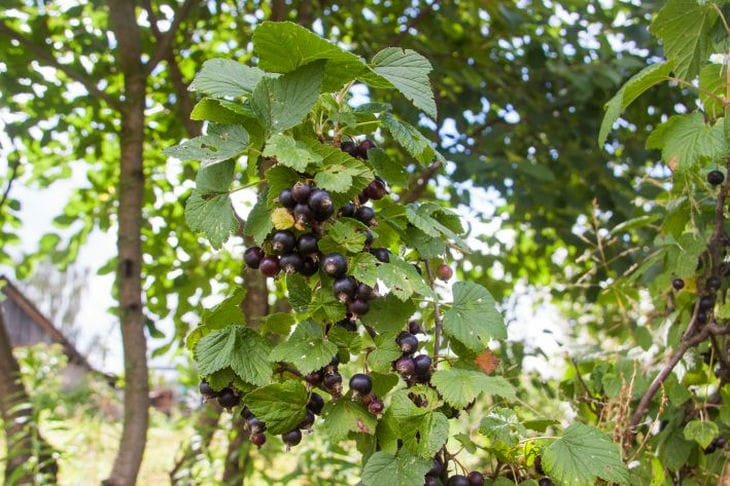Currants are considered an unpretentious crop, but still require certain care in order to get a rich and tasty harvest of berries in the future.
Therefore, we suggest that you familiarize yourself with the secrets of caring for currants.
Spring pruning
Spring pruning of shrubs should be carried out after the snow melts to rejuvenate them.
Any currant bush needs to be renewed every 5-7 years, cutting off damaged, old and diseased branches.
These branches take away nutrients and produce almost no fruit. By removing diseased branches, you will provide more nutrients for the development of new shoots.

Bush supports
To prevent currant bushes from falling apart as they grow, you need to provide them with supports.
Wooden or plastic structures are suitable for this purpose, which will help prevent heavy currant branches from falling onto the ground.
Loosening the soil
Loosening improves air and moisture exchange in the soil. It is advisable to carry out this procedure in the spring.
Black currant roots are located quite superficially.
Therefore, you cannot dig deep with a shovel close to the bush, so as not to damage the weakened roots. To loosen the soil, you should use a hoe and a flat cutter to remove weeds.
Watering
It is advisable to water the currants with warm water once every ten days. Each bush needs about five buckets of water. The liquid should be poured only under the root, and the branches and leaves should be dry.
To prevent water from spreading during watering, you should make a ridge of earth around the bush. Plastic fences also perfectly accumulate water in the area where the currant roots are located.
Top dressing
For abundant fruiting in the spring, currant bushes must be fed. To do this, use phosphorus, potassium and mineral fertilizers.








